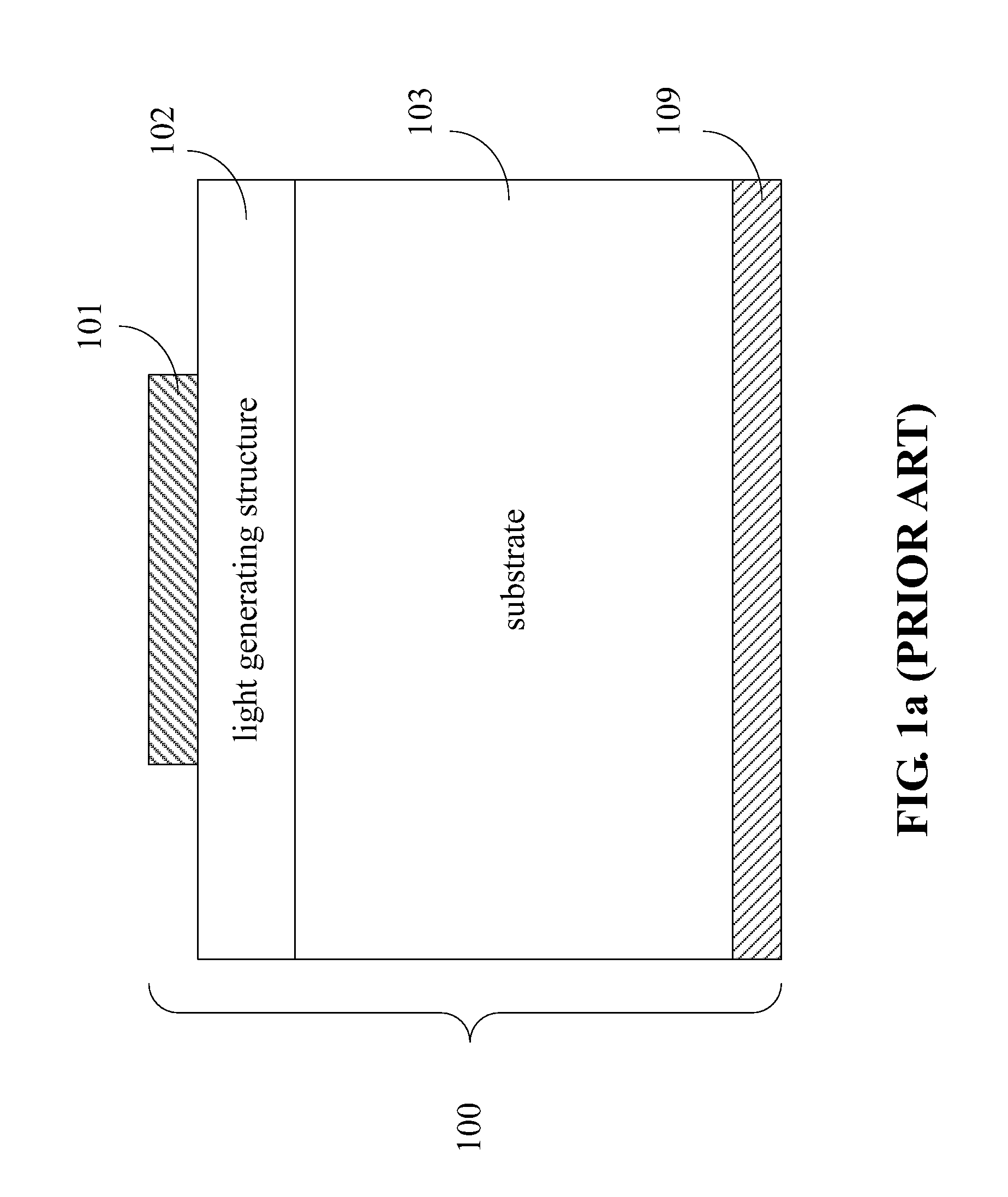Fabrication method of high-brightness light emitting diode having reflective layer
a technology of light-emitting diodes and fabrication methods, which is applied in the direction of basic electric elements, electrical apparatus, and semiconductor devices, can solve the problems of reduced reflectivity, limited brightness, and reduced external quantum efficiency of leds, and achieves reduced resistance, improved reflectivity, and maintained reflective surface flatness
- Summary
- Abstract
- Description
- Claims
- Application Information
AI Technical Summary
Benefits of technology
Problems solved by technology
Method used
Image
Examples
Embodiment Construction
[0023]The following descriptions are exemplary embodiments only, and are not intended to limit the scope, applicability, or configuration of the invention in any way. Rather, the following description provides a convenient illustration for implementing exemplary embodiments of the invention. Various changes to the described embodiments may be made in the function and arrangement of the elements described without departing from the scope of the invention as set forth in the appended claims.
[0024]The present invention generally comprises at least the following steps. First, a first layered structure is provided by sequentially forming a light generating structure, a non-alloy ohmic contact layer, and a first metallic layer from bottom to top on a side of a first substrate. Then, a second layered structure comprising at least a second substrate is provided. Then, the two-layered structures are wafer-bonded together, with the top side of the second layered structure interfacing with the...
PUM
 Login to View More
Login to View More Abstract
Description
Claims
Application Information
 Login to View More
Login to View More - R&D
- Intellectual Property
- Life Sciences
- Materials
- Tech Scout
- Unparalleled Data Quality
- Higher Quality Content
- 60% Fewer Hallucinations
Browse by: Latest US Patents, China's latest patents, Technical Efficacy Thesaurus, Application Domain, Technology Topic, Popular Technical Reports.
© 2025 PatSnap. All rights reserved.Legal|Privacy policy|Modern Slavery Act Transparency Statement|Sitemap|About US| Contact US: help@patsnap.com



